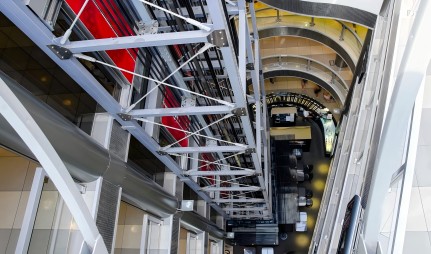Key standards and importance of elevator shaft guide rail installation. In modern buildings, elevators are indispensable vertical transportation tools for high-rise buildings, and their safety and stability are particularly important. Especially the world’s top-ranked excellent brand elevator companies:
Otis(U.S.)
ThyssenKrupp(Germany)
Kone(Finland)
Schindler(Switzerland)
Mitsubishi Electric Europe N.V. (Belgium)
Mitsubishi Heavy Industries, Ltd.(Japan)
ThyssenKrupp Elevator AG(Duisburg)
Doppelmayr Group(Austria)
Vestas(Danish)
Fujitec Co., Ltd.(Japan)
All attach great importance to the safety performance of elevators.
The installation quality of elevator shaft rails is directly related to the operating efficiency and safety of elevators. Therefore, understanding the installation standards of elevator shaft rails will not only help professional construction personnel improve the installation quality, but also allow the public to better understand the core elements of elevator safety.
Track material selection: the key in the foundation
High-strength steel that has been hot- or cold-rolled is typically used to make elevator hoistway rails. These materials need to have outstanding strength, wear resistance, and deformation resistance and adhere to industry or national standards. The track’s job as the elevator car’s “support” is to make sure that during long-term operation, there are no wear, deformations, or other problems. As a result, it’s important to make sure the materials’ quality satisfies all applicable technical standards while choosing track materials. Any usage of subpar materials could put the elevator’s operation at risk for safety issues.
The guide rail is accurately positioned and firmly fixed
The elevator hoistway’s center line and the installation position of the guide rails must be perfectly aligned. During installation, pay close attention to the horizontal and vertical alignment. The elevator’s ability to operate smoothly will be impacted by any small mistake. For instance, there are typically 1.5 to 2 meters separating the guide rail bracket from the hoistway wall. To keep the guide rail from moving or vibrating while the elevator is operating, every bracket must be sturdy and solid when employing expansion bolts or embedded pieces for fastening.
Verticality of guide rails: “balancer” of elevator operation
The verticality of elevator guide rails directly affects the smoothness of elevator operation. The standard stipulates that the verticality deviation of the guide rails should be controlled within 1 mm per meter, and the total height should not exceed 0.5 mm/m of the elevator lifting height. In order to ensure verticality, laser calibrators or theodolites are usually used for precise detection during installation. Any vertical deviation beyond the allowable range will cause the elevator car to shake during operation, seriously affecting the passengers’ riding experience.
Guide rail joints and connections: details determine safety
Guide rail installation requires not only accurate verticality and horizontality, but also joint processing is equally important. Special guide rail connection plates should be used for joints between guide rails to ensure that the joints are flat and without misalignment. Improper joint processing may cause noise or vibration during elevator operation, and even cause more serious safety problems. The standard stipulates that the gap between guide rail joints should be controlled between 0.1 and 0.5 mm to adapt to the changes in material thermal expansion and contraction to ensure that the elevator always runs safely.
Lubrication and protection of guide rails: prolong life and reduce maintenance
When the elevator is operating, the guide rails’ service life can be increased by lubricating them as needed to lessen friction between them and the sliding components of the car. Moreover, safeguards should be put in place during construction to prevent dust, stains, and other damage from getting to the exposed guide rail sections. Ensuring the elevator operates smoothly and minimizing the frequency and expense of subsequent maintenance can be achieved through appropriate lubrication and protection.
Acceptance test: the last checkpoint to ensure the safety of elevator operation
It is necessary to conduct a number of thorough acceptance tests following the installation of guide rails in order to guarantee that the elevator’s overall performance satisfies national requirements. These tests include of safety performance evaluations, load tests, and speed tests. By means of these testing, potential issues can be identified and promptly resolved to guarantee the stability and safety of the elevator while it is actually in use.
A professional installation team and strict implementation standards can not only improve the operating efficiency of the elevator, but also provide passengers with a safer and more comfortable riding experience. Therefore, paying attention to the installation standards of elevator guide rails is not only the responsibility of construction personnel, but also a common concern of building developers and users.
Post time: Aug-31-2024


